Content Providers
-
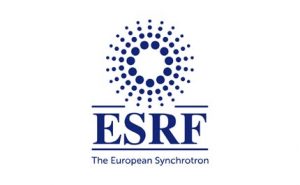
ESRF – European Synchrotron Radiation Facility
The ESRF is the world’s most intense X-ray source and a centre of excellence for fundamental and innovation-driven research in condensed and living matter science.
The intense source of synchrotron-generated light produces X-rays 100 billion times brighter than the X-rays used in hospitals....59 training materialsESRF – European Synchrotron Radiation Facility https://www.esrf.eu/ https://pan-training.eu/content_providers/esrf-european-synchrotron-radiation-facility The ESRF is the world’s most intense X-ray source and a centre of excellence for fundamental and innovation-driven research in condensed and living matter science. The intense source of synchrotron-generated light produces X-rays 100 billion times brighter than the X-rays used in hospitals. These X-rays, endowed with exceptional properties, are produced at the ESRF by the high energy electrons that race around the storage ring, a circular tunnel measuring 844 metres in circumference. Each year, the demand to use these X-ray beams increases and near to 9000 scientists from around the world come to “beamlines”, each equipped with state-of-the-art instrumentation, operating 24 hours a day, seven days a week. Located in Grenoble, France, the ESRF owes its success to the international cooperation of 22 partner nations, of which 13 are Members and 9 are Associates. /system/content_providers/images/000/000/016/original/logo-esrf-300x185.jpg?1638889710 -
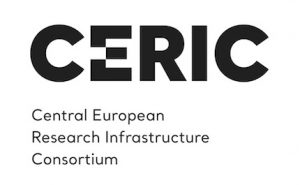
Central European Research Infrastructure Consortium (CERIC-ERIC)
CERIC-ERIC integrates and provides open access to some of the best facilities in Europe, to help science and industry advance in all fields of materials, biomaterials and nanotechnology. With a single entry point to some of the leading national research infrastructures in 8 European countries, it...
39 training materialsCentral European Research Infrastructure Consortium (CERIC-ERIC) https://www.ceric-eric.eu/ https://pan-training.eu/content_providers/central-european-research-infrastructure-consortium-ceric-eric CERIC-ERIC integrates and provides open access to some of the best facilities in Europe, to help science and industry advance in all fields of materials, biomaterials and nanotechnology. With a single entry point to some of the leading national research infrastructures in 8 European countries, it enables the delivery of innovative solutions to societal challenges in the fields of energy, health, food, cultural heritage and more. /system/content_providers/images/000/000/017/original/logoCERIC_430x265px-300x185.jpg?1638888961 -
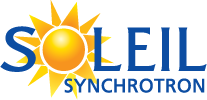
SOLEIL
SOLEIL is located in France and is both an electromagnetic radiation source covering a wide range of energies (from the infrared to the x-rays) and a research laboratory at the cutting edge of experimental techniques dedicated to matter analysis down to the atomic scale, as well as a service...
15 training materials0 events (2 past events)SOLEIL https://www.synchrotron-soleil.fr/en https://pan-training.eu/content_providers/soleil SOLEIL is located in France and is both an electromagnetic radiation source covering a wide range of energies (from the infrared to the x-rays) and a research laboratory at the cutting edge of experimental techniques dedicated to matter analysis down to the atomic scale, as well as a service platform open to all scientific and industrial communities. In applied research, SOLEIL can be used in many various fields such as pharmacy, medicine, chemistry, petrochemistry, environment, nuclear energy, and the automobile industry, as well as nanotechnologies, micromechanics and microelectronics, and more… /system/content_providers/images/000/000/002/original/logo_0.png?1638889338 -

Heinz Maier-Leibnitz Zentrum (MLZ)
The Heinz Maier-Leibnitz Zentrum (MLZ) is a leading centre for cutting-edge research with neutrons and positrons. By offering a unique suite of high-performance neutron scattering instruments, scientists are encouraged and enabled to pursue state-of-the-art research in diverse fields as physics,...
0 events (12 past events)Heinz Maier-Leibnitz Zentrum (MLZ) https://mlz-garching.de/ https://services.tesshub.hzdr.de/content_providers/heinz-maier-leibnitz-zentrum-mlz The Heinz Maier-Leibnitz Zentrum (MLZ) is a leading centre for cutting-edge research with neutrons and positrons. By offering a unique suite of high-performance neutron scattering instruments, scientists are encouraged and enabled to pursue state-of-the-art research in diverse fields as physics, chemistry, biology, earth sciences, engineering or material science. Our mission is to offer substantial support to scientists from all over the world in addressing the grand challenges facing society today. The MLZ represents the cooperation between the Technische Universität München (TUM) and two research centres of the Helmholtz Association, namely Forschungszentrum Jülich and Helmholtz-Zentrum Hereon (former HZG) to exploit the scientific use of the Forschungs-Neutronenquelle Heinz Maier-Leibnitz in Garching near Munich. /system/content_providers/images/000/000/103/original/mlz-300x140.png?1744096021 -
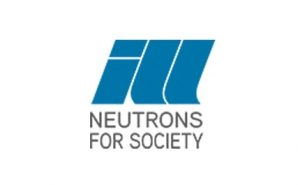
Institut Laue-Langevin (ILL)
The Institut Laue-Langevin is an international research centre at the leading edge of neutron science and technology.
As the world’s flagship centre for neutron science, the ILL provides scientists with a very high flux of neutrons feeding some 40 state-of-the-art instruments, which are...
9 training materialsInstitut Laue-Langevin (ILL) https://www.ill.eu https://pan-training.eu/content_providers/institut-laue-langevin-ill The Institut Laue-Langevin is an international research centre at the leading edge of neutron science and technology. As the world’s flagship centre for neutron science, the ILL provides scientists with a very high flux of neutrons feeding some 40 state-of-the-art instruments, which are constantly being developed and upgraded. As a service institute, the ILL makes its facilities and expertise available to visiting scientists. Every year, about 1400 researchers from over 40 countries visit the ILL and 640 experiments selected by a scientific review committee are performed. Research focuses primarily on fundamental science in a variety of fields: condensed matter physics, chemistry, biology, nuclear physics and materials science, etc. The ILL also collaborates closely and at different levels of confidentiality with the R&D departments of industrial enterprises. ILL is funded and managed by France, Germany and the United Kingdom, in partnership with ten other countries. /system/content_providers/images/000/000/020/original/logo-neutrons-for-society-300x185.jpg?1638889800 -

Helmholtz-Zentrum Dresden-Rossendorf (HZDR)
The HZDR is a member of the Helmholtz Association of German Research Centres. As registered, non-profit institution supported by the authorities of the Federal Government and the Free State of Saxony the HZDR pursues interdisciplinary research in the fields of Energy, Health, and Matter.
The...
7 training materials0 events (3 past events)Helmholtz-Zentrum Dresden-Rossendorf (HZDR) https://www.hzdr.de/ https://pan-training.eu/content_providers/helmholtz-zentrum-dresden-rossendorf-hzdr The HZDR is a member of the Helmholtz Association of German Research Centres. As registered, non-profit institution supported by the authorities of the Federal Government and the Free State of Saxony the HZDR pursues interdisciplinary research in the fields of Energy, Health, and Matter. The eight scientific institutes are supported by four central departments: * Research Technoplogy * Information Services and Computing * Technical Services * Administration /system/content_providers/images/000/000/001/original/HZDR-Logo-in-Vertical-Format-%28jpg%29.jpg?1638889047 -

Deutsches Elektronen-Synchrotron (DESY)
DESY is one of the world’s leading accelerator centres based in Germany. Researchers use the large-scale facilities at DESY to explore the microcosm in all its variety – from the interactions of tiny elementary particles and the behaviour of new types of nanomaterials to biomolecular processes...
6 training materials0 events (5 past events)Deutsches Elektronen-Synchrotron (DESY) http://www.desy.de/ https://pan-training.eu/content_providers/deutsches-elektronen-synchrotron-desy DESY is one of the world’s leading accelerator centres based in Germany. Researchers use the large-scale facilities at DESY to explore the microcosm in all its variety – from the interactions of tiny elementary particles and the behaviour of new types of nanomaterials to biomolecular processes that are essential to life. The accelerators and detectors that DESY develops and builds are unique research tools. The facilities generate the world’s most intense X-ray light, accelerate particles to record energies and open completely new windows onto the universe. That makes DESY not only a magnet for more than 3000 guest researchers from over 40 countries every year, but also a coveted partner for national and international cooperations. Committed young researchers find an exciting interdisciplinary setting at DESY. The research centre offers specialized training for a large number of professions. DESY cooperates with industry and business to promote new technologies that will benefit society and encourage innovations. This also benefits the metropolitan regions of the two DESY locations, Hamburg and Zeuthen near Berlin. /system/content_providers/images/000/000/003/original/DESY.png?1638889118 -

MAX IV
MAX IV Laboratory is a Swedish national synchrotron laboratory that has operated as a user facility since 2016. It is the successor to MAX-lab, which was in operation between 1987 and 2015. MAX IV offers access to several beamlines that provide modern X-ray spectroscopy, scattering/diffraction,...
5 training materialsMAX IV https://www.maxiv.lu.se/ https://pan-training.eu/content_providers/max-iv MAX IV Laboratory is a Swedish national synchrotron laboratory that has operated as a user facility since 2016. It is the successor to MAX-lab, which was in operation between 1987 and 2015. MAX IV offers access to several beamlines that provide modern X-ray spectroscopy, scattering/diffraction, and imaging techniques to contribute to solving scientific questions in a wide range of areas. The beamlines are open to academia, research institutes, industry, and government agencies worldwide through the user access programmes. The X-ray light at MAX IV is produced by an accelerator complex comprising a linear accelerator and two storage rings (1.5 GeV and 3 GeV) for electrons. /system/content_providers/images/000/000/007/original/Unknown.png?1638889199 -

Diamond Light Source
Diamond Light Source is the UK’s national synchrotron. It works like a giant microscope, harnessing the power of electrons to produce bright light that scientists can use to study anything from fossils to jet engines to viruses and vaccines.
The machine accelerates electrons to near light...
4 training materialsDiamond Light Source https://www.diamond.ac.uk/Home/ https://pan-training.eu/content_providers/diamond-light-source Diamond Light Source is the UK’s national synchrotron. It works like a giant microscope, harnessing the power of electrons to produce bright light that scientists can use to study anything from fossils to jet engines to viruses and vaccines. The machine accelerates electrons to near light speeds so that they give off light 10 billion times brighter than the sun. These bright beams are then directed off into laboratories known as ‘beamlines’. Here, scientists use the light to study a vast range of subject matter, from new medicines and treatments for disease to innovative engineering and cutting-edge technology. Whether it’s fragments of ancient paintings or unknown virus structures, at the synchrotron, scientists can study their samples using a machine that is 10,000 times more powerful than a traditional microscope. Diamond is one of the most advanced scientific facilities in the world, and its pioneering capabilities are helping to keep the UK at the forefront of scientific research. /system/content_providers/images/000/000/006/original/csm_diamond_7ba8bd502e.png?1638889088 -
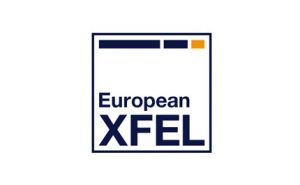
European XFEL
The European XFEL in the Hamburg area is a new international research facility of superlatives: 27,000 X-ray flashes per second and a brilliance that is a billion times higher than that of the best conventional X-ray sources open up completely new opportunities for science. Research groups from...
3 training materialsEuropean XFEL https://www.xfel.eu/index_eng.html/ https://pan-training.eu/content_providers/european-xfel The European XFEL in the Hamburg area is a new international research facility of superlatives: 27,000 X-ray flashes per second and a brilliance that is a billion times higher than that of the best conventional X-ray sources open up completely new opportunities for science. Research groups from around the world are able to map the atomic details of viruses, decipher the molecular composition of cells, take three-dimensional “photos” of the nanoworld, “film” chemical reactions, and study processes such as those occurring deep inside planets. European XFEL has a workforce of more than 350 employees and started user operation September 2017. With construction and commissioning costs of 1.25 billion euro (at 2005 price levels) and a total length of 3.4 kilometres, the European XFEL is one of the largest and most ambitious European new research facilities to date. At present, 12 countries have signed the European XFEL convention: Denmark, France, Germany, Hungary, Italy, Poland, Russia, Slovakia, Spain, Sweden, Switzerland, and the United Kingdom. /system/content_providers/images/000/000/019/original/logo-european-xfel-300x185.jpg?1638889760